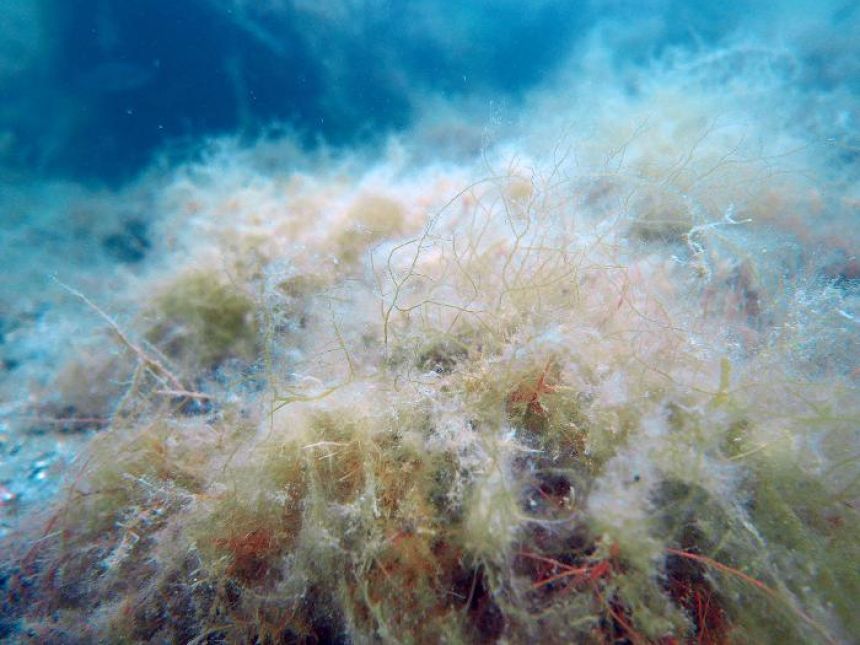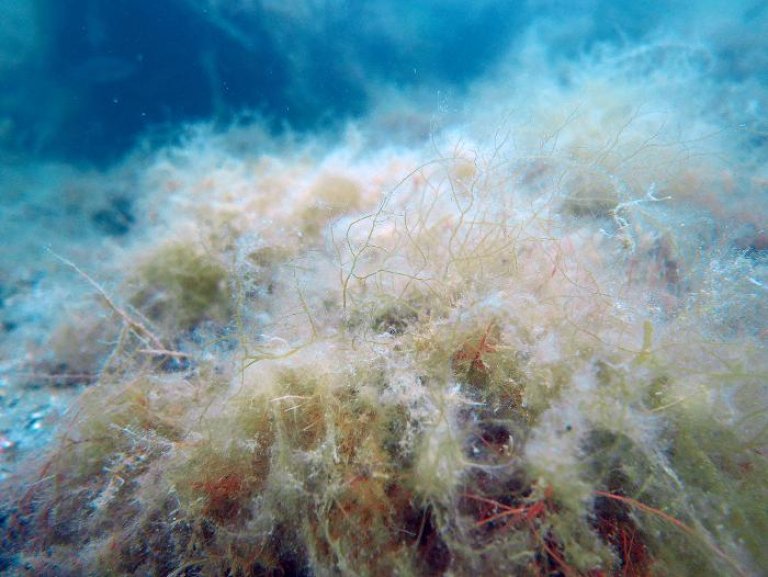
Turf algae growth in the Sognefjord
NIVA carried out this suruvey on behalf of the Norwegian Environment Agency. The aim of this survey was to assess the environmental status of macroalgae communities at six stations in Sognefjorden, and to re-visit and monitor seasonal changes (early vs late summer) in the macroalgal community at two stations in Ryfylke. The background for undertaking such a survey is to get a better documentation of previous observations of increasing amount of turf algae growth reducing the abundance of kelp vegetation.
Macroalgal community was identified according to species and abundance, fouling of filamentous algae on kelp lamina and on the seabed was considered at all stations (2 stations in Ryfylke and 6 stations in Sognefjorden). The surveys were carried out in the period 14. -18. September 2016.
All stations showed significant fouling from filamentous algae, both on the seafloor and on the kelp lamina. The exception was one outer, more wave exposed station in Sognefjorden (HS1), where the quality of the kelp was relatively good. Dense mats of filamentous algae were observed at virtually all depths except for two stations in Sognefjorden (HS5 and HS6) that were significantly overgrazed and dominated by sea urchins in high densities.

Occurrence of sugar kelp was lower at the two re-visited stations in Ryfylke in September compared with observations in June. Fouling of filamentous algae on kelp plants were higher and kelp plants' biological state thus poorer in September than in June. Fouling of filamentous algae is a likely explanation for the loss of kelp at the stations throughout the summer season. Fouling of filamentous algae negatively affecting sugar kelp in Southern and Western Norway has occasionally been observed during summer seasons. This study also shows that Laminaria kelp is negatively affected. The observations indicate that turf algae growth is an increasing problem that is becoming common in medium exposed and more protected coast and fjord areas in Southern and Western Norway. The fact that kelp plants still survive in reduced densities suggests that the ecosystem has not undergone a comprehensive regime shift, but it is questionable how long the kelp beds will manage to survive these conditions.
Studies from Europe, America and Australia can demonstrate similar trends where perennial algae gradually have been replaced by ephemeral turf algae. It is uncertain how these turf algal communities will affect kelp abundance over time. There is reason for concern and need for long-term monitoring of the development of the kelp status at certain areas along the Norwegian coast.